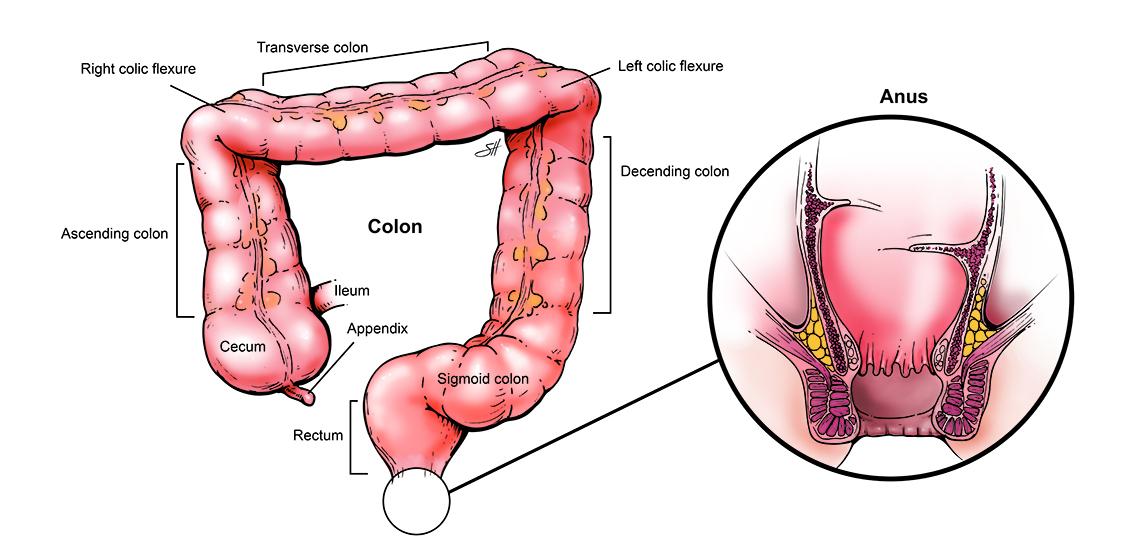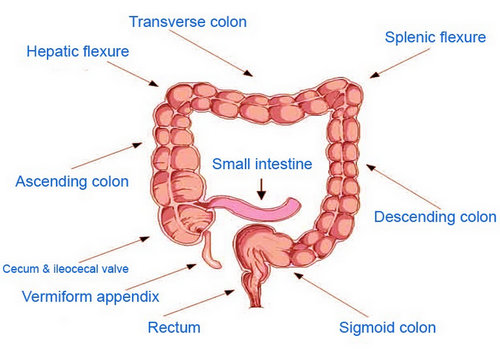What causes prolapsed colon. Rectal Prolapse: Causes, Symptoms, and Treatment Options Explained
What are the main causes of rectal prolapse. How can you recognize the symptoms of this condition. What treatment options are available for managing rectal prolapse. Is surgery necessary in all cases of rectal prolapse. How can rectal prolapse be prevented or its risk reduced.
Understanding Rectal Prolapse: Definition and Types
Rectal prolapse is a condition where part of the rectum slips down and protrudes from the anus. It occurs when the rectum becomes unattached inside the body, effectively turning itself inside out. This relatively rare condition affects fewer than 3 in every 100,000 people, according to the American Society of Colon & Rectal Surgeons.
There are three main types of rectal prolapse:
- External (full-thickness or complete prolapse): The entire thickness of the rectal wall protrudes through the anus.
- Mucosal: Only the lining of the anus (mucosa) sticks out.
- Internal (incomplete prolapse): The rectum folds in on itself but doesn’t protrude externally.
Common Causes and Risk Factors for Rectal Prolapse
While the exact causes of rectal prolapse are not fully understood, several risk factors and potential triggers have been identified:

- Weakening of the muscles supporting the rectum
- Chronic constipation or straining during bowel movements
- Pregnancy and childbirth
- Diarrhea (affecting about 15% of cases)
- Neurological conditions (e.g., multiple sclerosis, lumbar disk disease)
- Pelvic floor disorders
- Age (more common in older adults, especially females over 50)
Are certain individuals more susceptible to rectal prolapse? Yes, females aged 50 years or older are six times more likely to be affected than males. Most females with rectal prolapse are in their 60s, while affected males tend to be 40 years or younger.
Recognizing the Symptoms of Rectal Prolapse
Identifying rectal prolapse early is crucial for effective treatment. The symptoms often develop gradually and may include:
- A lump or swelling protruding from the anus during bowel movements
- Difficulty controlling bowel movements (affecting 50-75% of cases)
- Constipation (present in 25-50% of cases)
- Bright red blood in the stool
- Rectal pressure and discomfort
- Mucous discharge
- Feeling of incomplete bowel evacuation
How does the sensation of rectal prolapse feel? Some individuals describe it as similar to sitting on a ball, especially as the condition progresses.

Differential Diagnosis: Rectal Prolapse vs. Hemorrhoids
Rectal prolapse is often confused with hemorrhoids due to similar symptoms and location. However, these conditions have distinct characteristics:
Rectal Prolapse:
- Involves the entire rectal wall
- Appears as a circular protrusion
- May require manual reduction
Hemorrhoids:
- Swollen blood vessels in the anal area
- Usually appear as individual lumps
- Often resolve on their own or with conservative treatment
How can you differentiate between rectal prolapse and hemorrhoids? A healthcare professional can perform a physical examination and may use additional diagnostic tools to make an accurate diagnosis.
Potential Complications of Untreated Rectal Prolapse
If left untreated, rectal prolapse can lead to serious complications:
- Strangulated prolapse: The protruding rectum becomes trapped, cutting off blood supply and potentially leading to tissue death or gangrene.
- Solitary rectal ulcer syndrome: Ulcers may develop on the prolapsed portion of the rectum, often requiring surgical intervention.
- Recurring prolapse: Even after treatment, there’s a risk of recurrence (up to 30% of cases).
- Fecal incontinence: Prolonged prolapse can weaken anal sphincter muscles, leading to difficulty controlling bowel movements.
Can complications of rectal prolapse be life-threatening? In severe cases, such as strangulated prolapse with gangrene, immediate medical attention is crucial to prevent potentially life-threatening situations.
:max_bytes(150000):strip_icc()/102891261-56a5043a5f9b58b7d0da90be.jpg)
Treatment Options for Rectal Prolapse
The treatment approach for rectal prolapse depends on various factors, including the patient’s age, overall health, and the severity of the condition. Options include:
Conservative Management:
- Increased fiber intake and adequate hydration
- Pelvic floor exercises (Kegels)
- Stool softeners or laxatives to prevent constipation
- Biofeedback therapy
Surgical Interventions:
- Abdominal approach (rectopexy): Fixing the rectum to the sacrum
- Perineal approach: Removing the prolapsed portion of the rectum
- Laparoscopic or robotic-assisted procedures
Is surgery always necessary for rectal prolapse? While conservative measures may help in mild cases, most patients eventually require surgical intervention for long-term relief and to prevent complications.
Prevention and Risk Reduction Strategies
While not all cases of rectal prolapse can be prevented, certain lifestyle modifications may help reduce the risk:
- Maintaining a high-fiber diet to prevent constipation
- Staying well-hydrated
- Avoiding straining during bowel movements
- Performing regular pelvic floor exercises
- Managing chronic cough or other conditions that increase abdominal pressure
- Seeking prompt treatment for persistent diarrhea or constipation
How effective are preventive measures in reducing rectal prolapse risk? While these strategies can help maintain overall bowel health, they may not completely eliminate the risk, especially in individuals with predisposing factors.
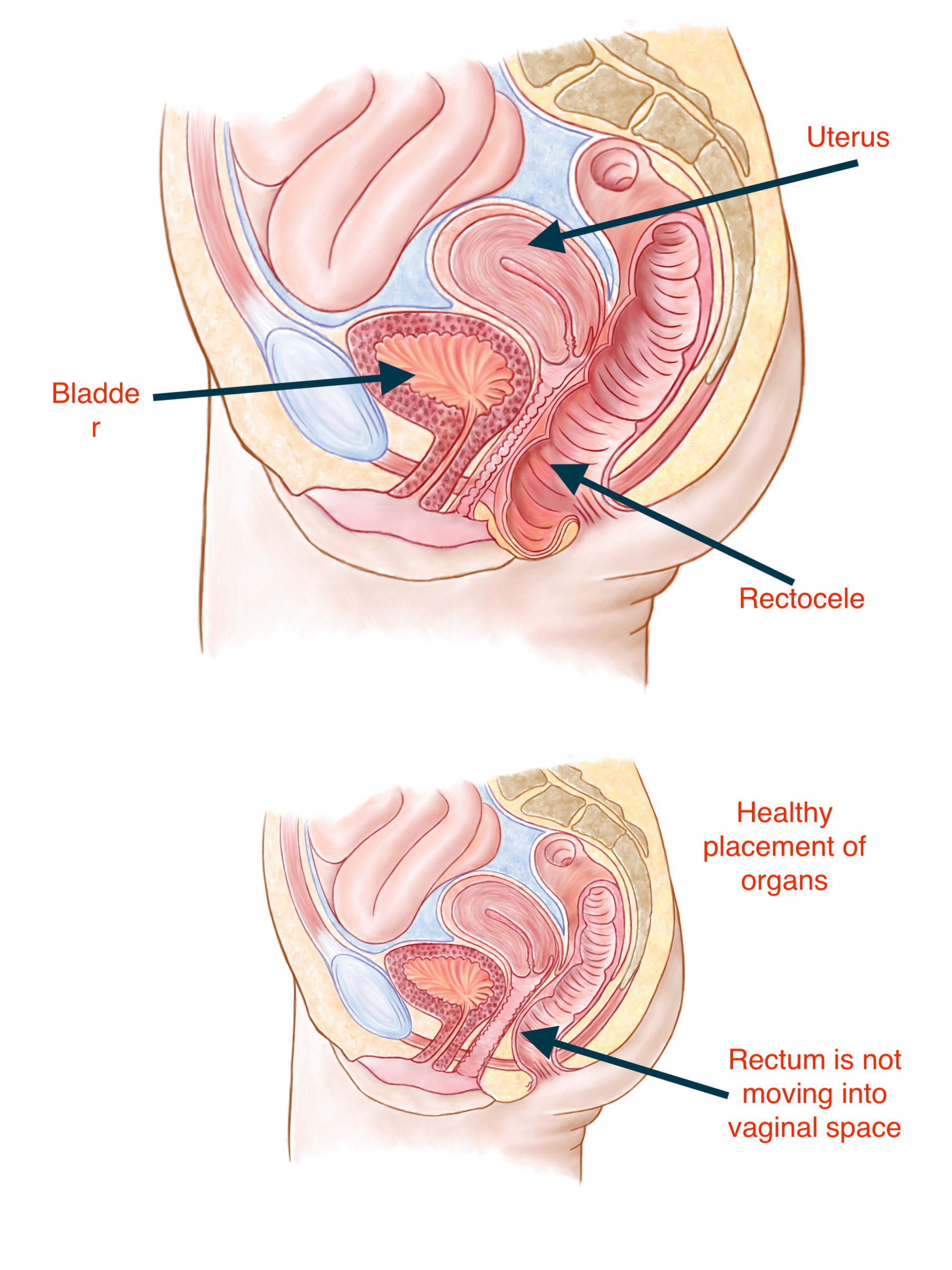
Living with Rectal Prolapse: Coping Strategies and Quality of Life
Dealing with rectal prolapse can significantly impact an individual’s quality of life. Here are some coping strategies:
- Joining support groups to connect with others facing similar challenges
- Working closely with healthcare providers to manage symptoms effectively
- Adopting a positive mindset and focusing on overall well-being
- Making necessary lifestyle adjustments to minimize discomfort
- Exploring psychological support if the condition causes emotional distress
Can individuals with rectal prolapse lead normal lives? With proper management and treatment, many people with rectal prolapse can maintain a good quality of life and engage in regular activities.
Recent Advances in Rectal Prolapse Research and Treatment
The field of rectal prolapse management is continuously evolving, with ongoing research aimed at improving outcomes and patient experiences:
- Development of minimally invasive surgical techniques
- Exploration of regenerative medicine approaches for strengthening pelvic floor muscles
- Investigation of genetic factors contributing to rectal prolapse susceptibility
- Advancements in diagnostic imaging for more accurate assessment
- Studies on long-term outcomes of various treatment modalities
What promising developments are on the horizon for rectal prolapse treatment? Researchers are exploring innovative approaches such as tissue engineering and personalized medicine to tailor treatments to individual patients’ needs.

In conclusion, rectal prolapse is a challenging condition that requires prompt attention and appropriate management. By understanding its causes, recognizing symptoms early, and exploring available treatment options, individuals affected by this condition can work towards improved quality of life and prevention of complications. As research continues to advance, we can expect even more effective and less invasive treatment strategies in the future.
Rectal prolapse: Causes, symptoms, and treatments
Rectal prolapse occurs when part of the rectum slips down and protrudes from the anus. The rectum is the last part of the large intestine and is where the body stores feces before voiding.
Rectal prolapse happens when the rectum becomes unattached inside the body and comes out through the anus, effectively turning itself inside out. This condition is typically due to a weakening of the muscles that support the rectum.
Rectal prolapse is a relatively rare condition, with the American Society of Colon & Rectal Surgeons estimating that it affects fewer than 3 in every 100,000 people.
Although the condition can affect anyone, it is more common in older females. Other risk factors include chronic constipation, straining, and childbirth. Rectal prolapse can cause difficulty controlling bowel movements, and it can lead to incontinence. Early treatment may involve fluids, an increased fiber intake, and pelvic floor exercises, but most people will eventually require surgery.
Fast facts on rectal prolapse:
- A rectal prolapse tends to become noticeable gradually over time.
- It is often associated with weak muscles in the pelvis.
- There can be complications if a person does not receive prompt and effective treatment.
- The treatment options will depend on the person’s age and general health, as well as the cause of the prolapse.
Was this helpful?
There are three types of rectal prolapse:
- External: Also known as full-thickness or complete prolapse, the entire thickness of the wall of the rectum sticks out through the anus.
- Mucosal: Only the lining of the anus, known as the mucosa, sticks out through the anus.
- Internal: Also known as an incomplete prolapse, the rectum folds in on itself but does not stick out through the anus.
At first, the person might only notice a lump or swelling coming out of their anus when they have a bowel movement.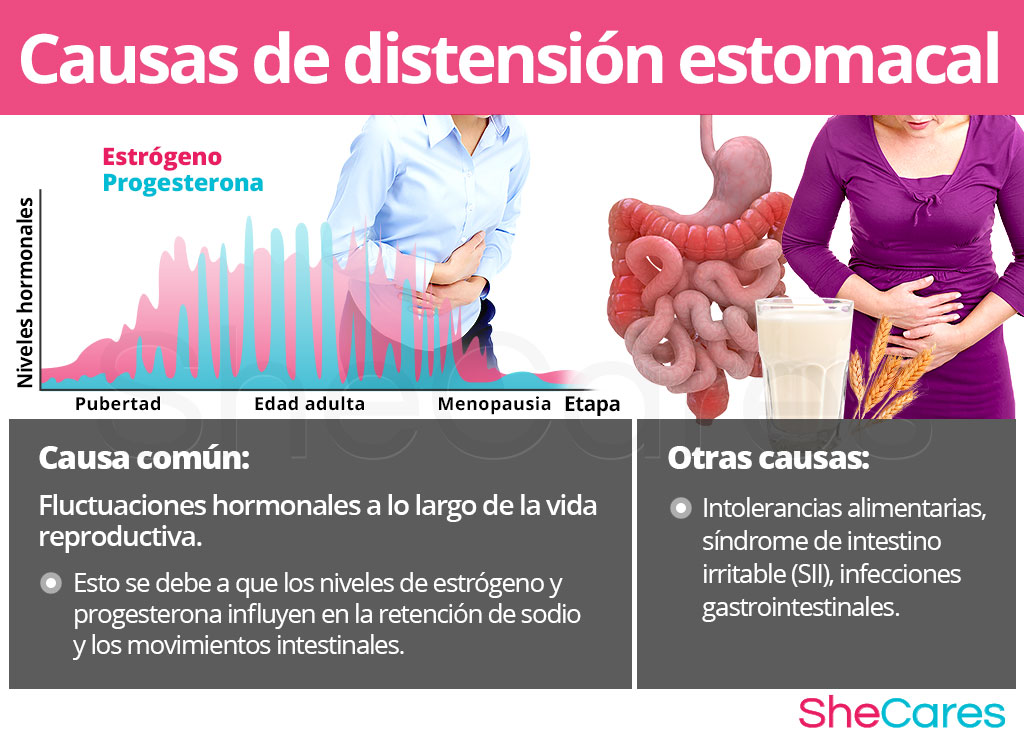 Initially, the person may be able to push the rectal prolapse back in, or it might naturally return inside the anus. Over time, however, the prolapse is likely to protrude permanently, and a person will be unable to push it back.
Initially, the person may be able to push the rectal prolapse back in, or it might naturally return inside the anus. Over time, however, the prolapse is likely to protrude permanently, and a person will be unable to push it back.
As time goes on, a rectal prolapse may happen when a person coughs, sneezes, stands up, or exercises. Some people with a rectal prolapse may describe the sensation as being similar to sitting on a ball.
Some people may experience an internal rectal prolapse, which is different in that the prolapse will not protrude. However, the person may experience the feeling of an incomplete bowel movement or pressure in the rectum.
Other symptoms of a rectal prolapse can include:
- difficulty controlling bowel movements, which occurs in about 50–75% of cases
- constipation, which affects about 25–50% of people who have a rectal prolapse
- bright red blood coming out of the rectum
- rectal pressure and discomfort
- mucous discharge
Complications may include:
- Strangulated prolapse: This occurs when part of the rectum becomes trapped and cuts off the blood supply, causing tissue to die.
 The individual may develop gangrene, causing this section of the rectum to die and decay. This is often painful and requires surgery.
The individual may develop gangrene, causing this section of the rectum to die and decay. This is often painful and requires surgery. - Solitary rectal ulcer syndrome: Present in mucosal prolapse, ulcers can develop on the part of the rectum sticking out. This complication often requires surgery.
- Recurring prolapse: People who have surgery for a rectal prolapse may have another prolapse in the future. Evidence suggests that this occurs in up to 30% of cases. As a result, doctors may advise a person to make lifestyle adjustments after surgery, such as adopting a high fiber diet and taking a proactive approach to hydration.
Rectal prolapse has multiple associated risk factors and causes, although doctors do not fully understand why some people get it.
It often involves a weakening of the muscles that support the rectum and has various possible triggers, including:
- pregnancy
- constipation or chronic straining
- diarrhea, which affects about 15% of people
- conditions that affect the pelvis or lower gastrointestinal tract
Some neurological conditions also affect the nerves associated with rectal prolapse:
- multiple sclerosis
- lumbar disk disease
- spinal tumors
- injury to the lower back or pelvis
Rectal prolapse is more common in adults than children, and it is particularly prevalent in females aged 50 years or older, who are six times as likely to be affected as males. Most females who have rectal prolapse are in their 60s, while most males are aged 40 years or younger.
Most females who have rectal prolapse are in their 60s, while most males are aged 40 years or younger.
In the case of older females, rectal prolapse will often occur at the same time as a prolapsed bladder or gynecologic organ. This combined prolapse may occur due to general weakness in the pelvic floor muscles.
People may confuse rectal prolapse with hemorrhoids, which are also known as piles. Both conditions affect the last section of the bowel and have similar symptoms.
However, while rectal prolapse affects the rectal wall, hemorrhoids affect the blood vessels in the anal canal. These two conditions require different treatment, so it is important to get the correct diagnosis.
To diagnose a rectal prolapse, the doctor will look at the person’s medical history, ask them about their symptoms, and conduct a physical examination.
The physical examination may involve the doctor inserting a lubricated, gloved finger into the rectum or observing a person’s anus while they are squatting as though they are on a toilet or commode. Although some people may find this uncomfortable and possibly embarrassing, it should not be painful and is very important for an accurate diagnosis.
Although some people may find this uncomfortable and possibly embarrassing, it should not be painful and is very important for an accurate diagnosis.
Further tests may be necessary to clarify the diagnosis or rule out other processes. These tests can include:
- Defecography: Also known as a proctography, this is a type of X-ray that shows the rectum and anal canal during a bowel movement.
- Colonoscopy: During this procedure, the doctor inserts a long, flexible, tube-like camera called a colonoscope to take a closer look at the large intestine and rectum.
- Anorectal manometry: This involves placing a pressure-measuring tube inside the rectum to check how well the muscles that control bowel movements are working.
- Endoanal ultrasound: Using a thin ultrasound probe, the doctor will look at the muscles that the body uses to control the bowels
Although a rectal prolapse is not often an emergency medical problem, it can be uncomfortable, cause embarrassment, and have a significant adverse effect on the person’s mental and physical well-being.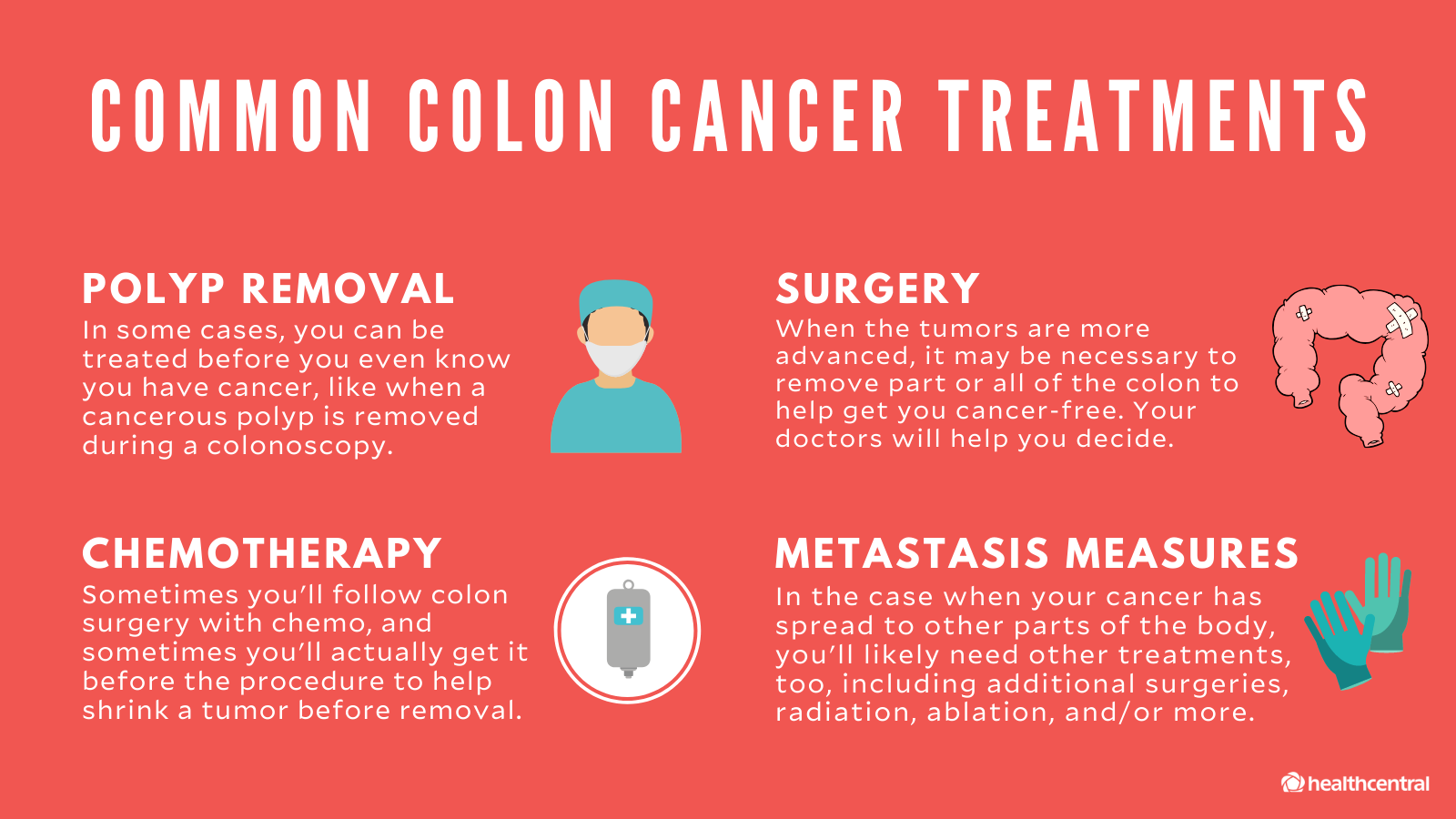
Therefore, it is essential for anyone who has noticed any signs or symptoms of rectal prolapse to speak with a doctor as soon as possible.
The longer a person puts off receiving treatment for rectal prolapse, the higher the chance of permanent problems, such as incontinence and nerve damage.
In the first instance, it is important to relieve the symptoms and allow easier bowel movements. Doctors may recommend a high fiber diet, stool softeners, and bowel training, as well as drinking plenty of water.
If that does not work, then a doctor will suggest a surgical option. The type of surgery will depend on several factors:
- type of prolapse
- the person’s age
- other medical problems
- whether the person has constipation
There are two general types of surgery for rectal prolapse:
Abdominal
This method involves making an incision in the belly, or lower abdomen. The surgeon then pulls the rectum upward and attaches it to other structures in the body to hold it in the appropriate position.:max_bytes(150000):strip_icc()/whats-the-difference-between-a-colonic-and-an-enema-89033-color-V3-51a0b434d44d4045a17cfdf94bf21d6d.png)
Perineal
This approach does not involve an abdominal incision. Instead, a surgeon cuts the protruding rectum and attaches the remaining rectum to the anus.
People can take certain steps to lower their risk of rectal prolapse. These include:
- eating plenty of fiber
- drinking plenty of water
- exercising regularly
- avoiding excessive straining during a bowel movement
Most people make a full recovery after treatment for rectal prolapse. However, proper recovery is crucial, and how long this takes will depend on the type of treatment.
Typically, people who have had surgery spend a few days in the hospital after the operation, and most make a complete recovery within a few months. After undergoing surgery for a rectal prolapse, people should try to avoid straining and heavy lifting for at least 6 months, consume a nutritious and high fiber diet, and drink plenty of water.
Rectal Prolapse | Boston Children’s Hospital
Listen
The rectum is the lower portion of the large intestine. Normally, it is attached to the pelvis with ligaments and muscles. Rectal prolapse occurs when the lining of a child’s rectum protrudes through the anus and outside the body. This can occur because the ligaments and muscles become weakened from problems including chronic constipation, chronic diarrhea, or straining while going to the bathroom. Underlying conditions such as cystic fibrosis and Hirschsprung’s disease can also cause rectal prolapse.
Normally, it is attached to the pelvis with ligaments and muscles. Rectal prolapse occurs when the lining of a child’s rectum protrudes through the anus and outside the body. This can occur because the ligaments and muscles become weakened from problems including chronic constipation, chronic diarrhea, or straining while going to the bathroom. Underlying conditions such as cystic fibrosis and Hirschsprung’s disease can also cause rectal prolapse.
Rectal Prolapse | Symptoms & Causes
What are the symptoms of rectal prolapse?
The main symptom of rectal prolapse is the protrusion of part or all of the rectum’s lining through your child’s anal sphincter. You may notice a dark red mass protruding from the anus, sometimes accompanied by blood or mucus, particularly when your child is straining. Rectal prolapse isn’t usually painful, but it can cause discomfort. Other symptoms may include:
- fecal incontinence (leakage of stool from the anus)
- feeling of fullness or of not being able to completely empty the bowels
- anal itching or irritation
What causes rectal prolapse?
Rectal prolapse occurs when the muscles and ligaments that support the rectum become weakened./colon-cancer-causes-5b2bc34143a1030036957405.png) Certain factors can make your child more likely to experience rectal prolapse, including:
Certain factors can make your child more likely to experience rectal prolapse, including:
- straining while going to the bathroom
- chronic constipation
- acute or chronic diarrhea
- malnutrition
- cystic fibrosis
- neurological conditions such as tethered cord or spinal cord injury
- Hirschsprung’s disease and other colorectal and pelvic malformations
- anal penetration, such as from sexual abuse
Rectal Prolapse | Diagnosis & Treatments
How is rectal prolapse diagnosed?
Parents typically first notice rectal prolapse — its appearance is usually obvious and alarming if your child hasn’t previously experienced prolapse. Physicians diagnose rectal prolapse based on a physical examination. They may also use various imaging tests to determine if an underlying condition is responsible.
How is rectal prolapse treated?
Most mild cases of rectal prolapse can be treated by your child’s physician, who will manually push the prolapse back in place. They will also make recommendations that address the cause of prolapse, such as giving your child a stool softener and increasing dietary fiber to improve regular bowel movements.
They will also make recommendations that address the cause of prolapse, such as giving your child a stool softener and increasing dietary fiber to improve regular bowel movements.
If your child experiences frequent or severe rectal prolapse, you may need to see a specialist to treat the underlying condition. Depending on the type of prolapse, your child may require surgical intervention. The doctor will discuss the best treatment options with you. These may include:
- sclerotherapy, in which a sclerosing agent is injected around the rectum to scar the surrounding tissue and keep the prolapse in place
- Thiersch cerclage, in which a wire or other thin material is used to narrow the anus
- trans-anal resection, in which surgeons remove the prolapse through the anus
- laparoscopic sigmoid resection, in which surgeons remove the sigmoid colon
- rectopexy, in which the rectum is sutured to the sacrum
How we care for rectal prolapse
Most children who experience mild rectal prolapse can be treated by their pediatrician and likely won’t have another one.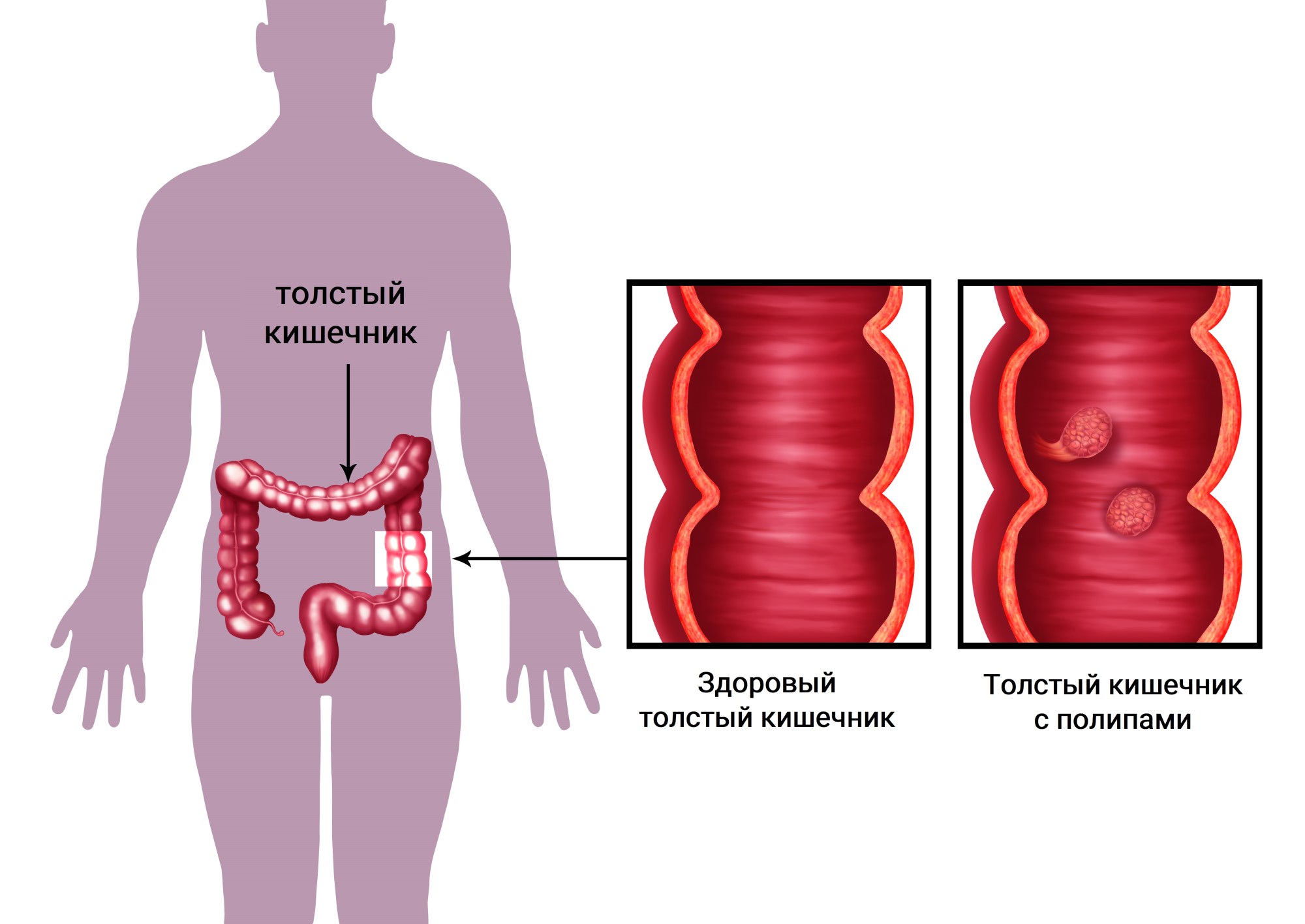 But for kids who have frequent or severe prolapse, treatment by a specialist is often necessary. The skilled clinicians in the Colorectal and Pelvic Malformation Center at Boston Children’s Hospital see infants and children who experience rectal prolapse due to Hirschsprung’s disease and other chronic conditions.
But for kids who have frequent or severe prolapse, treatment by a specialist is often necessary. The skilled clinicians in the Colorectal and Pelvic Malformation Center at Boston Children’s Hospital see infants and children who experience rectal prolapse due to Hirschsprung’s disease and other chronic conditions.
Rectal Prolapse | Programs & Services
Programs
Rectal Prolapse | Contact Us
Prolapse of the rectum – methods of treatment, stages of prolapse, symptoms and complications
Prices Doctors Our centers
Classification Symptoms Complications Diagnosis Treatment methods Prognosis Prevention
Rectal prolapse or rectal prolapse is a pathological condition
which is accompanied by the release of the mucosa beyond the boundaries of the anal sphincter.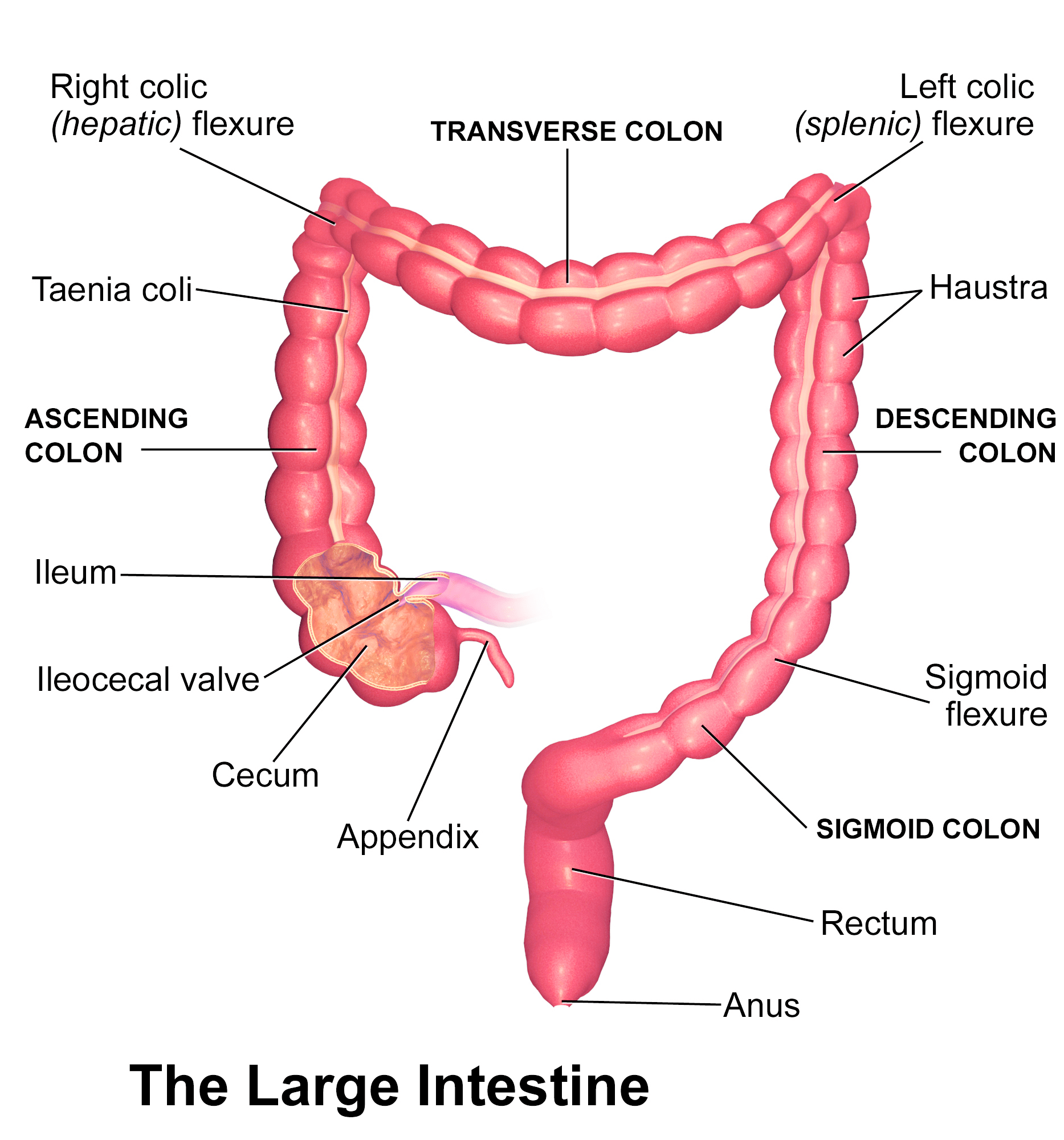 All layers of the diastal layer fall out
All layers of the diastal layer fall out
segment of the large intestine. The protruding segment in this case ranges from 2 to 20 centimeters and even more.
Often this disease is diagnosed in men, they account for 70% of clinical cases. In 30% pathology
occurs in women. Prolapse is predominantly formed in people of working age from 20 to 50 years, however
often occurs in babies 3-4 years old due to the specifics of the anatomical and physiological characteristics of the child
organism.
Causes of weakening of muscles and ligaments, which leads to prolapse of rectal nodes:
- hereditary predisposition;
- incorrect anatomical structure of the pelvic bones, shape and rectum and sigmoid colon, intestinal wall;
- prolonged defecation disorders: diarrhoea, constipation;
- excessive straining during urination;
- parasitic intestinal infections;
- injuries of pelvic nerves and muscles;
- regular excessive physical activity, hard work, heavy lifting;
- heavy or multiple childbirth in women;
- diseases of the nervous system.

Classification
The official classification of human rectal prolapse is used by specialists when developing a therapeutic
scheme. It provides for the distribution of pathology into three stages:
- stage 1 (compensated) – the intestine falls out only during defecation and returns on its own
in a natural position; - stage 2 (subcompensated) – prolapse occurs during bowel movements and at high
physical exertion, accompanied by insufficiency of the anal sphincter; - Stage 3 (decompensated) – prolapse of the rectum is observed even when walking, coughing, sneezing,
accompanied by incontinence of feces, gases, severe insufficiency of the sphincter.
Specialists also distinguish two variants of rectal prolapse:
- Hernial – Douglas pocket and anterior wall of the rectum are displaced downward, with weak muscles
pelvic floor and constant high intra-abdominal pressure lead to prolapse of the intestine into the anal canal. Through
Through
time, all the walls are involved in the pathological process, and the sagging increases. - Invaginated or internal prolapse – part of the rectum or sigmoid colon is embedded in the lumen
other part of the intestine. In this case, the organ does not go outside, and the main symptom of pathology is regular
strong pain attacks.
Symptoms
Symptoms of pathology occur both gradually and suddenly. An unexpected start is associated with sharp and intense
loads, stress. After such an episode, the rectum falls out, and the person feels sharp pains in the abdomen, up to
to pain shock.
More often, however, rectal prolapse develops gradually. As the pathology progresses, it becomes more
pronounced and signs of prolapse:
- sensation of a foreign body in the anus;
- abdominal pain that worsens with walking, exercise, defecation;
- incontinence, inability to hold back gases, stools;
- frequent false urge to defecate;
- sensation of incomplete bowel movements;
- frequent urination;
- secretion of mucus, blood from the anus;
- the formation of a solitary ulcer, mucosal edema (with internal prolapse).

Untreated complications
The most dangerous complication that occurs when prolapse is ignored is the infringement of the prolapsed segment of the intestine.
Infringement appears with untimely intervention or when you try to set the prolapse on your own.
Accompanied by edema, increasing ischemia, impaired blood supply. If you do not seek help in time,
the outer portion of the tissues will be affected by necrosis (tissue necrosis).
Another complication that pathology leads to is solitary ulcers. Such wounds cause over time
bleeding leading to perforation.
In advanced stages of internal prolapse, acute intestinal obstruction and peritonitis often occur. These are dangerous
conditions that pose a threat to human life.
Promotion! Free consultation with a surgeon about surgery
Take advantage of this unique opportunity and get a free consultation about elective surgery.
Diagnostics
A proctologist can diagnose rectal prolapse and the degree of prolapse of the intestine even without examination and analysis
symptoms. The prolapsed part of the organ has a cone-shaped, cylindrical or spherical shape, painted in
bright red or bluish tint. The mucous membrane is markedly swollen and bleeds on contact. On
in the early stages, you can set the intestine and restore the normal state of the tissues. If at the time of examination the prolapse is not
observed, the patient is offered to strain to provoke a prolapse.
During a digital examination, the doctor determines the tone of the sphincter, differentiates the disease from hemorrhoids and anal
polyps. After that, for an accurate diagnosis, identification of complications and the exact stage of the disease,
instrumental diagnostics, which includes:
- colonoscopy – to identify the causes of the pathology;
- barium enema – to detect functional changes in the colon;
- defectography (proctography) – to determine the degree of prolapse;
- anorectal manometry – to assess muscle function;
- endoscopic examination (sigmoidoscopy) – to detect intussusception, the presence of ulcers;
- endoscopic biopsy with tissue examination – is prescribed if a solitary ulcer is detected to exclude
oncology of the rectum; - gynecological examination – for women.

Methods of treatment of rectal prolapse
Conservative approaches are used only in the earliest stages of the disease. The main purpose of such events is
normalize stool and eliminate increased intra-abdominal pressure. Clinical recommendations include:
- high fiber diet;
- drink plenty of water;
- laxatives;
- drugs to increase peristalsis;
- neurostimulation, which helps to regain control over the muscles in case of impaired innervation.
Surgical methods of treatment bring results in the later stages of the development of prolapse, as well as in cases where
when conservative therapy fails. There are many operations that help get rid of
pathology. They include:
- excision of prolapsed rectum;
- bowel fixation;
- plastic surgery of the anal canal, pelvic floor;
- colon resection;
- combined methods.

Resection of the prolapsed section is more often done predominantly by surgery
Delorme. The surgeon removes the mucous membrane and forms a new muscle layer in the anal canal area. Operation
has a low invasiveness and is suitable even for older patients with serious chronic pathologies.
Less commonly, resection of the prolapsed lobe is done by patchwork cutting according to Nelaton or circular removal according to Mikulich.
Among fixation methods, rectopexy is considered the most effective –
an operation in which the pelvic section of the intestine is attached to the walls of the pelvis, thus restoring the correct
organ anatomy. The operation is performed on patients under 50-55 years of age. In 97% of cases, organ prolapse is eliminated.
Anal plastic surgery helps narrow the anus with surgical sutures and wires,
synthetic materials. However, this group of methods has a high risk of recurrence, so it is rarely used.
Resection of the distal colon is necessary if the patient has a solitary ulcer or necrosis. Often
such an operation is combined with fixing operations.
SM-Clinic surgeons have experience in performing various types of prolapse surgery. Our clinicians in
are fluent in modern surgical techniques and successfully help patients get rid of pathological
bowel prolapse.
Forecast
Surgical treatment brings a positive result without recurrence in 80% of cases. In 70-75% of patients, as a result
treatment restores the evacuation capacity of the intestine. At the same time, 25-30% of patients develop disorders
transitory function.
Moreover, the earlier the patient seeks help, the more favorable the prognosis will be. Unfortunately, patients often go to
doctor only in the later stages of the development of pathology, when prolapse is already obvious, bowel functions are impaired, and in
tissues began to undergo irreversible changes.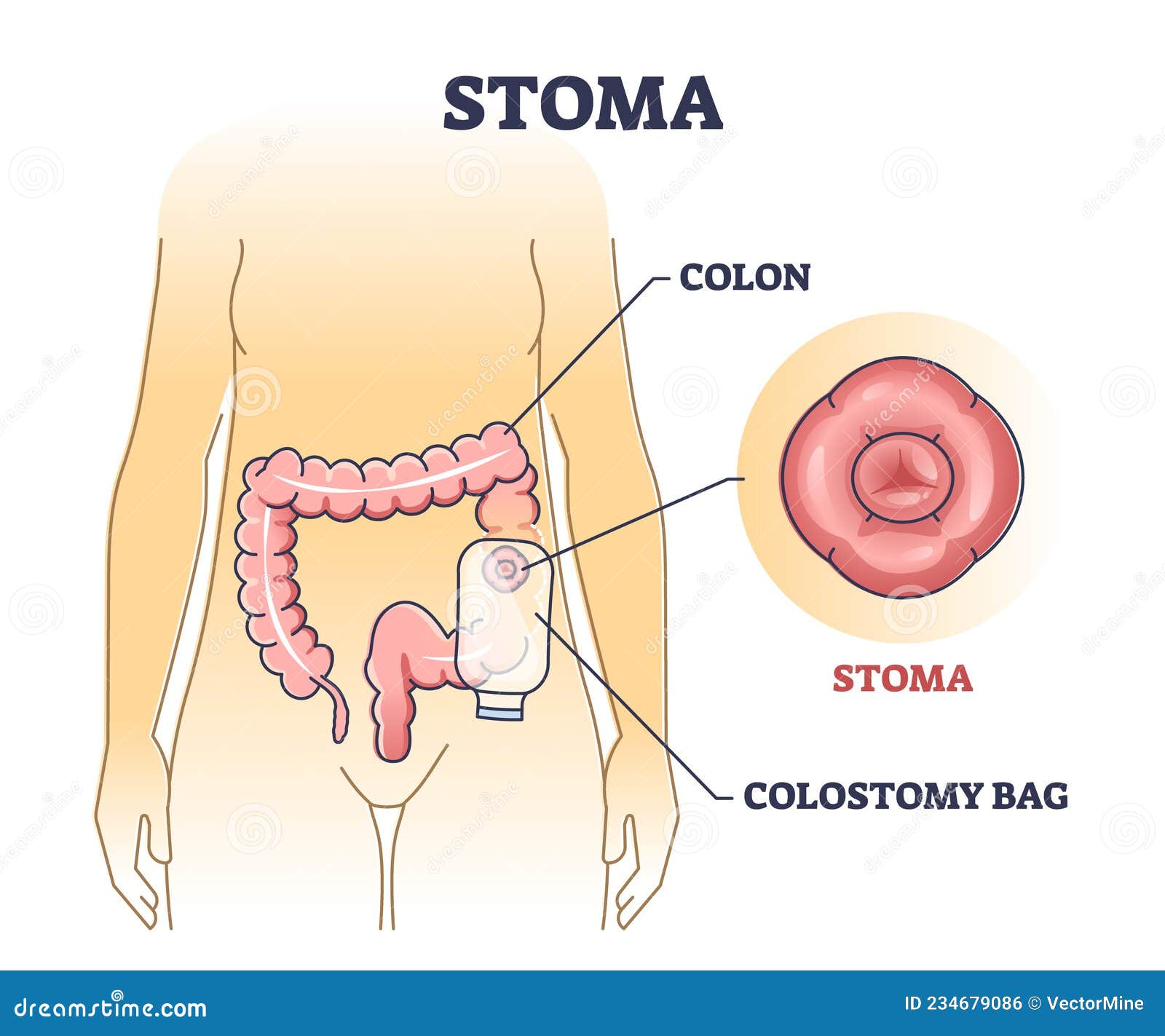 In this case, the risk of developing life-threatening complications increases in
In this case, the risk of developing life-threatening complications increases in
times.
Prophylaxis
To prevent the disease, as well as to prevent relapse, doctors recommend eliminating factors that increase
intra-abdominal pressure and cause weakness of the pelvic floor muscles:
- avoid injuries in the pelvis, sacrum;
- physical activity, stress;
- treat constipation, flatulence, diarrhea;
- do not start urolithiasis, prostate adenoma;
- to prevent hacking agonizing cough.
Pathology develops as a result of a combination of several factors, so for prevention it is necessary to minimize all
risks.
Specialists in this field 21 doctors
Leading doctors 6 doctors
Marina Borisovna Petrushina
Surgeon, proctologist
Work experience: 42 years
Udarnikov, 19
Ladozhskaya metro station
Make an appointment
Aramyan David Surenovich
Surgeon, coloproctologist, oncologist, mammologist
Work experience: 1 3 years
Malaya Balkanskaya, 23
m.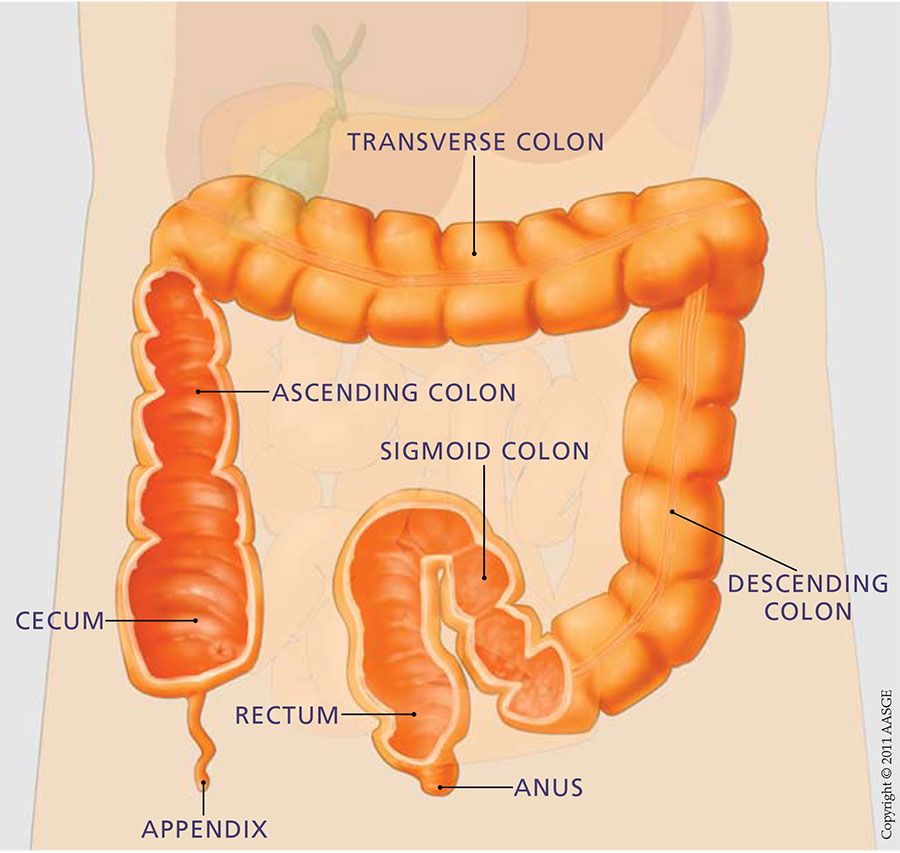 Kupchino
Kupchino
Sign up
Yaroslav Viktorovich Kolosovsky
Surgeon, mammologist, oncologist
Work experience: 17 years
Dybenko, 13k4
m. Dybenko Street
9000 2 Make an appointment
Karapetyan Zaven Surenovich
Coloproctologist, surgeon and phlebologist
Work experience: 15 years
Dunaysky, 47
Dunayskaya metro station
Marshal Zakharov, 2 0
Leninsky Prospect metro station
Make an appointment
Shishkin Andrey Andreevich
Surgeon, phlebologist, proctologist. Candidate of Medical Sciences
Work experience: 13 years
Dunaisky, 47
Dunayskaya metro station
Make an appointment
Maslennikov Dmitry Yurievich
Surgeon, proctologist, mammologist
Work experience: 16 years
Udarnikov, 19
metro Ladozhskaya
Dybenko, 13k4
metro Dy Street benko
Make an appointment
Show more
+15 doctors
Other doctors 15 doctors
Ardashov Pavel Sergeevich
Coloproctologist-surgeon
Work experience: 9 years
Udarnikov, 19
Ladozhskaya metro station
Dybenko, 13k4
m. Dybenko street
Dybenko street
Make an appointment
Bulkina Maria Sergeevna
Coloproctologist, surgeon
Work experience: 11 years specter of Enlightenment
Make an appointment
Grinevich Vladimir Stanislavovich
Surgeon, oncologist, mammologist, coloproctologist
Work experience: 27 years
Vyborgskoe highway, 17
metro Prosveshcheniya
Make an appointment
Klyuev Andrey Nikolaevich
Operating proctologist
Work experience: 16 years
Malaya Balkanskaya, 23
Kupchino metro station
Make an appointment
Nekrasov Roman Aleksandrovich
Coloproctologist and surgeon
Work experience: 8 years
Udarnikov, 19
Ladozhskaya 9 metro station0003
Marshala Zakharov, 20
Leninsky Prospect metro station
Make an appointment
Petrova Vitalina Vasilievna
Operating proctologist
Work experience: 12 years
Vyborgskoe shosse, 17
Prospect Prosveshcheniya metro station
Make an appointment
Senko Vladimir Vladimirovich
Head of the Center for Surgery and Oncology
Work experience: 23 years
Dunaisky, 47
Dunayskaya metro station
Marshala Zakharova, 20
Leninskiy pr-t metro station
Vyborgskoe shosse, 17
Prosveshcheniya metro station
Make an appointment 90 003
Sinyagina (Nazarova) Maria Andreevna
Surgeon, proctologist
Work experience: 8 years
Marshala Zakharova, 20
06
Sokolova Anna Sergeevna
Coloproctologist, surgeon. Candidate of Medical Sciences.
Candidate of Medical Sciences.
Work experience: 13 years
Malaya Balkanskaya, 23
Kupchino metro station
Make an appointment
Sol Anton Alexandrovich
Work experience: 15 years
Vyborgskoe shosse, 17
metro Prosveshcheniya
Make an appointment
Fomenko Nikolai Aleksandrovich
Surgeon, proctologist, oncologist
Work experience: 15 years
Marshal Zakharov, 20
metro station Leninsky pr-t
Make an appointment
Khangireev Alexander Bakhytovich
Surgeon, oncologist, coloproctologist
Work experience: 13 years
Udarnikov, 19
002 Dunayskaya metro station
Make an appointment
Khokhlov Sergey Viktorovich
Surgeon, oncologist, coloproctologist
Work experience: 28 years
Vyborgskoe shosse, 17
metro Prospekt Prosveshcheniya
Make an appointment
Chuprina Susanna Vladimirovna
Coloproctologist of the highest category
Work experience: 22 years
Udarnikov, 19
Ladozhskaya metro station
Make an appointment
Yalda Ksenia Davidovna
Coloproctologist
Work experience: 11 years
Malaya Balkanskaya, 23
Kupchino metro station
Make an appointment
Hide the list
Our offices in St.
 Petersburg
Petersburg
6 branches
Center for Surgery Dunayskaya metro station
47 Dunaisky prospect
Dunaiskaya metro station
daily from 09:00 to 22:00
Surgery Center Ladozhskaya metro station
Udarnikov Avenue, 19/1
Ladozhskaya metro station
daily from 09:00 to 22:00
Center for Surgery Metro station “Leninsky Prospekt”
st. Marshal Zakharov, d.
daily from 09:00 to 22:00
Center for Surgery Prospekt Prosveshcheniya metro station
Vyborgskoe shosse, 17 building 1
Prospect Prosveshcheniya metro station
daily from 09:00 to 22:00
Center for Surgery, m. “Kupchino”
Malaya Balkanskaya street, 23
m. Kupchino
daily from 09:00 to 22:00
Center for Surgery Dybenko Street
Dybenko Street, 13k4
Dybenko Street
daily from 09:00 to 22:00
Prolapse of the rectum – methods of treatment, stages of prolapse, symptoms and complications
Prices Doctors Our centers
Classification Symptoms Complications Diagnosis Treatment methods Prognosis Prevention
Rectal prolapse , or rectal prolapse is a pathological condition
which is accompanied by the release of the mucosa beyond the boundaries of the anal sphincter.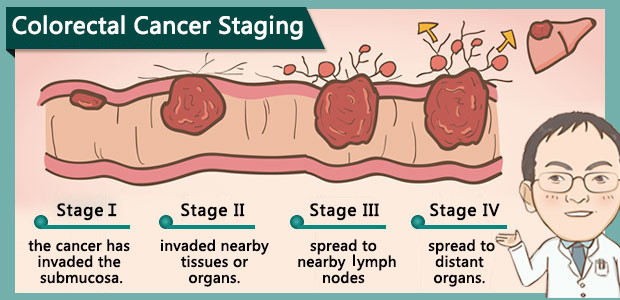 All layers of the diastal layer fall out
All layers of the diastal layer fall out
segment of the large intestine. The protruding segment in this case ranges from 2 to 20 centimeters and even more.
Often this disease is diagnosed in men, they account for 70% of clinical cases. In 30% pathology
occurs in women. Prolapse is predominantly formed in people of working age from 20 to 50 years, however
often occurs in babies 3-4 years old due to the specifics of the anatomical and physiological characteristics of the child
organism.
Causes of weakening of muscles and ligaments, which leads to prolapse of rectal nodes:
- hereditary predisposition;
- incorrect anatomical structure of the pelvic bones, shape and rectum and sigmoid colon, intestinal wall;
- prolonged defecation disorders: diarrhoea, constipation;
- excessive straining during urination;
- parasitic intestinal infections;
- injuries of pelvic nerves and muscles;
- regular excessive physical activity, hard work, heavy lifting;
- heavy or multiple childbirth in women;
- diseases of the nervous system.

Classification
The official classification of human rectal prolapse is used by specialists when developing a therapeutic
scheme. It provides for the distribution of pathology into three stages:
- stage 1 (compensated) – the intestine falls out only during defecation and returns on its own
in a natural position; - stage 2 (subcompensated) – prolapse occurs during bowel movements and at high
physical exertion, accompanied by insufficiency of the anal sphincter; - Stage 3 (decompensated) – prolapse of the rectum is observed even when walking, coughing, sneezing,
accompanied by incontinence of feces, gases, severe insufficiency of the sphincter.
Specialists also distinguish two variants of rectal prolapse:
- Hernial – Douglas pocket and anterior wall of the rectum are displaced downward, with weak muscles
pelvic floor and constant high intra-abdominal pressure lead to prolapse of the intestine into the anal canal. Through
Through
time, all the walls are involved in the pathological process, and the sagging increases. - Invaginated or internal prolapse – part of the rectum or sigmoid colon is embedded in the lumen
other part of the intestine. In this case, the organ does not go outside, and the main symptom of pathology is regular
strong pain attacks.
Symptoms
Symptoms of pathology occur both gradually and suddenly. An unexpected start is associated with sharp and intense
loads, stress. After such an episode, the rectum falls out, and the person feels sharp pains in the abdomen, up to
to pain shock.
More often, however, rectal prolapse develops gradually. As the pathology progresses, it becomes more
pronounced and signs of prolapse:
- sensation of a foreign body in the anus;
- abdominal pain that worsens with walking, exercise, defecation;
- incontinence, inability to hold back gases, stools;
- frequent false urge to defecate;
- sensation of incomplete bowel movements;
- frequent urination;
- secretion of mucus, blood from the anus;
- the formation of a solitary ulcer, mucosal edema (with internal prolapse).

Untreated complications
The most dangerous complication that occurs when prolapse is ignored is the infringement of the prolapsed segment of the intestine.
Infringement appears with untimely intervention or when you try to set the prolapse on your own.
Accompanied by edema, increasing ischemia, impaired blood supply. If you do not seek help in time,
the outer portion of the tissues will be affected by necrosis (tissue necrosis).
Another complication that pathology leads to is solitary ulcers. Such wounds cause over time
bleeding leading to perforation.
In advanced stages of internal prolapse, acute intestinal obstruction and peritonitis often occur. These are dangerous
conditions that pose a threat to human life.
Promotion! Free consultation with a surgeon about surgery
Take advantage of this unique opportunity and get a free consultation about elective surgery.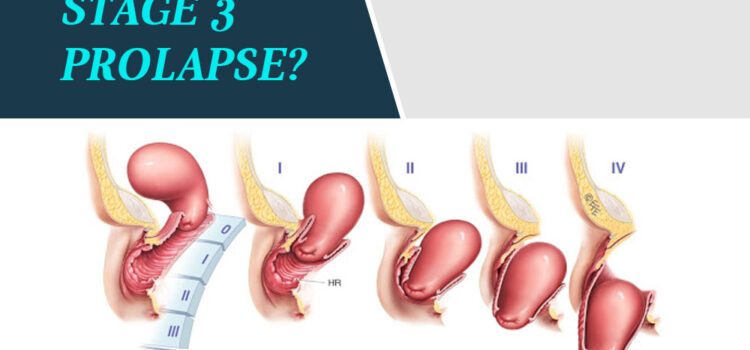
Diagnostics
A proctologist can diagnose rectal prolapse and the degree of prolapse of the intestine even without examination and analysis
symptoms. The prolapsed part of the organ has a cone-shaped, cylindrical or spherical shape, painted in
bright red or bluish tint. The mucous membrane is markedly swollen and bleeds on contact. On
in the early stages, you can set the intestine and restore the normal state of the tissues. If at the time of examination the prolapse is not
observed, the patient is offered to strain to provoke a prolapse.
During a digital examination, the doctor determines the tone of the sphincter, differentiates the disease from hemorrhoids and anal
polyps. After that, for an accurate diagnosis, identification of complications and the exact stage of the disease,
instrumental diagnostics, which includes:
- colonoscopy – to identify the causes of the pathology;
- barium enema – to detect functional changes in the colon;
- defectography (proctography) – to determine the degree of prolapse;
- anorectal manometry – to assess muscle function;
- endoscopic examination (sigmoidoscopy) – to detect intussusception, the presence of ulcers;
- endoscopic biopsy with tissue examination – is prescribed if a solitary ulcer is detected to exclude
oncology of the rectum; - gynecological examination – for women.

Methods of treatment of rectal prolapse
Conservative approaches are used only in the earliest stages of the disease. The main purpose of such events is
normalize stool and eliminate increased intra-abdominal pressure. Clinical recommendations include:
- high fiber diet;
- drink plenty of water;
- laxatives;
- drugs to increase peristalsis;
- neurostimulation, which helps to regain control over the muscles in case of impaired innervation.
Surgical methods of treatment bring results in the later stages of the development of prolapse, as well as in cases where
when conservative therapy fails. There are many operations that help get rid of
pathology. They include:
- excision of prolapsed rectum;
- bowel fixation;
- plastic surgery of the anal canal, pelvic floor;
- colon resection;
- combined methods.

Resection of the prolapsed section is more often done predominantly by surgery
Delorme. The surgeon removes the mucous membrane and forms a new muscle layer in the anal canal area. Operation
has a low invasiveness and is suitable even for older patients with serious chronic pathologies.
Less commonly, resection of the prolapsed lobe is done by patchwork cutting according to Nelaton or circular removal according to Mikulich.
Among fixation methods, rectopexy is considered the most effective –
an operation in which the pelvic section of the intestine is attached to the walls of the pelvis, thus restoring the correct
organ anatomy. The operation is performed on patients under 50-55 years of age. In 97% of cases, organ prolapse is eliminated.
Anal plastic surgery helps narrow the anus with surgical sutures and wires,
synthetic materials. However, this group of methods has a high risk of recurrence, so it is rarely used.
Resection of the distal colon is necessary if the patient has a solitary ulcer or necrosis. Often
such an operation is combined with fixing operations.
SM-Clinic surgeons have experience in performing various types of prolapse surgery. Our clinicians in
are fluent in modern surgical techniques and successfully help patients get rid of pathological
bowel prolapse.
Forecast
Surgical treatment brings a positive result without recurrence in 80% of cases. In 70-75% of patients, as a result
treatment restores the evacuation capacity of the intestine. At the same time, 25-30% of patients develop disorders
transitory function.
Moreover, the earlier the patient seeks help, the more favorable the prognosis will be. Unfortunately, patients often go to
doctor only in the later stages of the development of pathology, when prolapse is already obvious, bowel functions are impaired, and in
tissues began to undergo irreversible changes. In this case, the risk of developing life-threatening complications increases in
In this case, the risk of developing life-threatening complications increases in
times.
Prophylaxis
To prevent the disease, as well as to prevent relapse, doctors recommend eliminating factors that increase
intra-abdominal pressure and cause weakness of the pelvic floor muscles:
- avoid injuries in the pelvis, sacrum;
- physical activity, stress;
- treat constipation, flatulence, diarrhea;
- do not start urolithiasis, prostate adenoma;
- to prevent hacking agonizing cough.
Pathology develops as a result of a combination of several factors, so for prevention it is necessary to minimize all
risks.
Specialists in this field 21 doctors
Leading doctors 6 doctors
Marina Borisovna Petrushina
Surgeon, proctologist
Work experience: 42 years
Udarnikov, 19
Ladozhskaya metro station
Make an appointment
Aramyan David Surenovich
Surgeon, coloproctologist, oncologist, mammologist
Work experience: 1 3 years
Malaya Balkanskaya, 23
m. Kupchino
Kupchino
Sign up
Yaroslav Viktorovich Kolosovsky
Surgeon, mammologist, oncologist
Work experience: 17 years
Dybenko, 13k4
m. Dybenko Street
9000 2 Make an appointment
Karapetyan Zaven Surenovich
Coloproctologist, surgeon and phlebologist
Work experience: 15 years
Dunaysky, 47
Dunayskaya metro station
Marshal Zakharov, 2 0
Leninsky Prospect metro station
Make an appointment
Shishkin Andrey Andreevich
Surgeon, phlebologist, proctologist. Candidate of Medical Sciences
Work experience: 13 years
Dunaisky, 47
Dunayskaya metro station
Make an appointment
Maslennikov Dmitry Yurievich
Surgeon, proctologist, mammologist
Work experience: 16 years
Udarnikov, 19
metro Ladozhskaya
Dybenko, 13k4
metro Dy Street benko
Make an appointment
Show more
+15 doctors
Other doctors 15 doctors
Ardashov Pavel Sergeevich
Coloproctologist-surgeon
Work experience: 9 years
Udarnikov, 19
Ladozhskaya metro station
Dybenko, 13k4
m. Dybenko street
Dybenko street
Make an appointment
Bulkina Maria Sergeevna
Coloproctologist, surgeon
Work experience: 11 years specter of Enlightenment
Make an appointment
Grinevich Vladimir Stanislavovich
Surgeon, oncologist, mammologist, coloproctologist
Work experience: 27 years
Vyborgskoe highway, 17
metro Prosveshcheniya
Make an appointment
Klyuev Andrey Nikolaevich
Operating proctologist
Work experience: 16 years
Malaya Balkanskaya, 23
Kupchino metro station
Make an appointment
Nekrasov Roman Aleksandrovich
Coloproctologist and surgeon
Work experience: 8 years
Udarnikov, 19
Ladozhskaya 9 metro station0003
Marshala Zakharov, 20
Leninsky Prospect metro station
Make an appointment
Petrova Vitalina Vasilievna
Operating proctologist
Work experience: 12 years
Vyborgskoe shosse, 17
Prospect Prosveshcheniya metro station
Make an appointment
Senko Vladimir Vladimirovich
Head of the Center for Surgery and Oncology
Work experience: 23 years
Dunaisky, 47
Dunayskaya metro station
Marshala Zakharova, 20
Leninskiy pr-t metro station
Vyborgskoe shosse, 17
Prosveshcheniya metro station
Make an appointment 90 003
Sinyagina (Nazarova) Maria Andreevna
Surgeon, proctologist
Work experience: 8 years
Marshala Zakharova, 20
06
Sokolova Anna Sergeevna
Coloproctologist, surgeon. Candidate of Medical Sciences.
Candidate of Medical Sciences.
Work experience: 13 years
Malaya Balkanskaya, 23
Kupchino metro station
Make an appointment
Sol Anton Alexandrovich
Work experience: 15 years
Vyborgskoe shosse, 17
metro Prosveshcheniya
Make an appointment
Fomenko Nikolai Aleksandrovich
Surgeon, proctologist, oncologist
Work experience: 15 years
Marshal Zakharov, 20
metro station Leninsky pr-t
Make an appointment
Khangireev Alexander Bakhytovich
Surgeon, oncologist, coloproctologist
Work experience: 13 years
Udarnikov, 19
002 Dunayskaya metro station
Make an appointment
Khokhlov Sergey Viktorovich
Surgeon, oncologist, coloproctologist
Work experience: 28 years
Vyborgskoe shosse, 17
metro Prospekt Prosveshcheniya
Make an appointment
Chuprina Susanna Vladimirovna
Coloproctologist of the highest category
Work experience: 22 years
Udarnikov, 19
Ladozhskaya metro station
Make an appointment
Yalda Ksenia Davidovna
Coloproctologist
Work experience: 11 years
Malaya Balkanskaya, 23
Kupchino metro station
Make an appointment
Hide the list
Our offices in St.


 The individual may develop gangrene, causing this section of the rectum to die and decay. This is often painful and requires surgery.
The individual may develop gangrene, causing this section of the rectum to die and decay. This is often painful and requires surgery.
 Through
Through



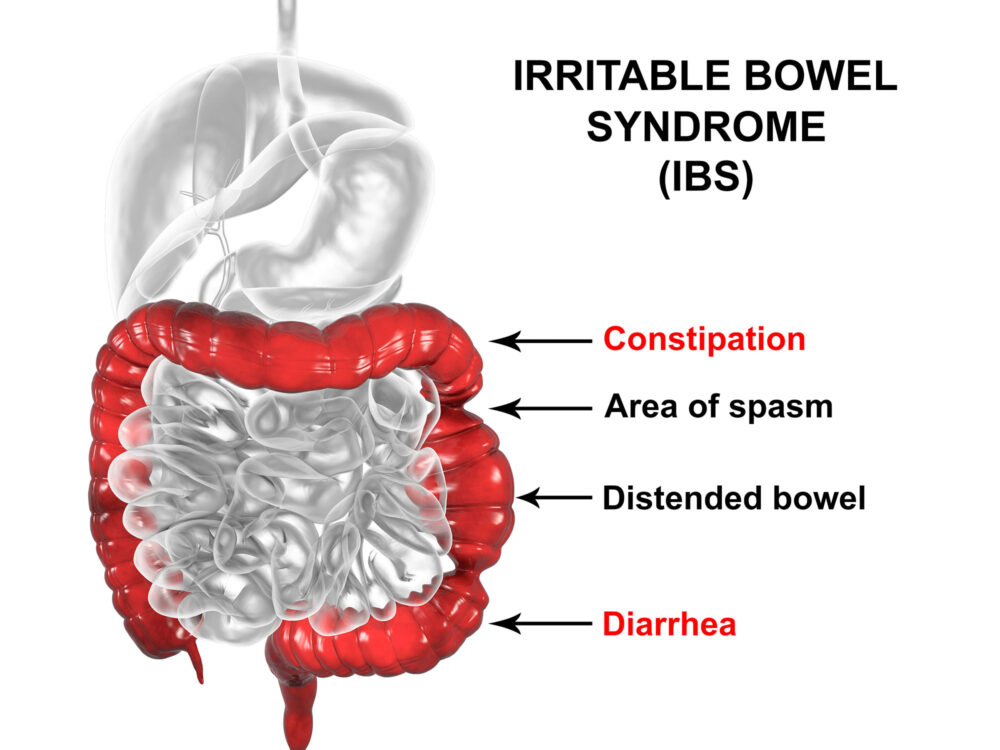 Through
Through